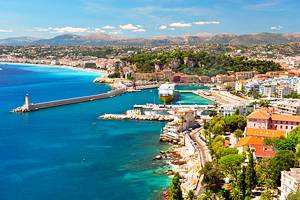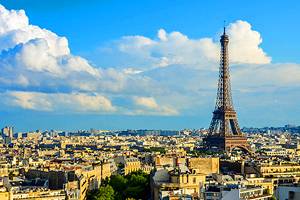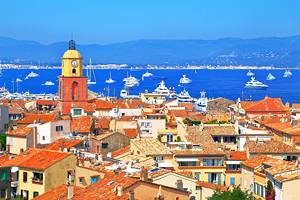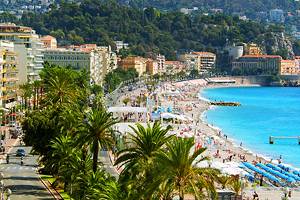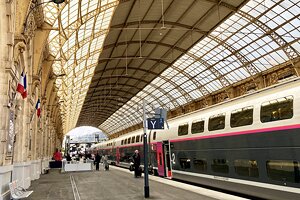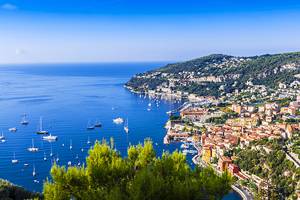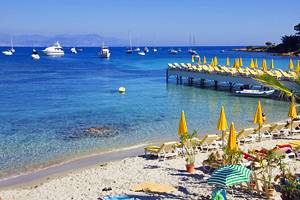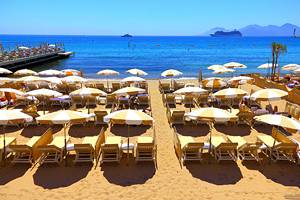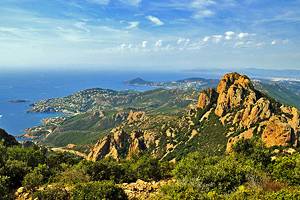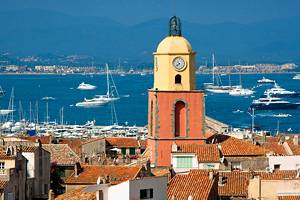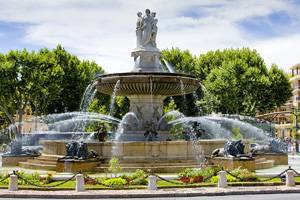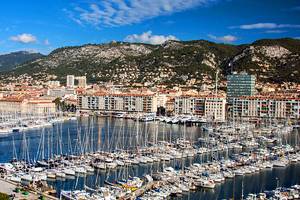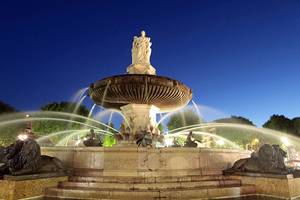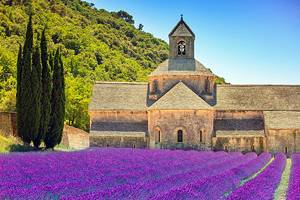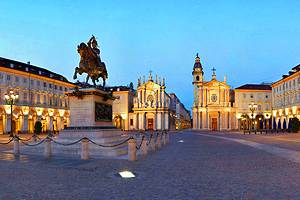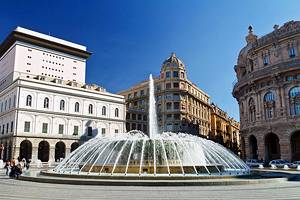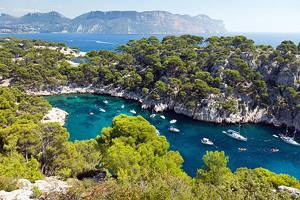Day Trips from Nice
At the heart of the French Riviera and bordering the Provence countryside, Nice is conveniently close to many popular tourist attractions that make rewarding day trips.
The essence of the dreamy Côte d'Azur is found in the glamorous royal city-state of Monaco and the sumptuous villas of Cap-Ferrat and Beaulieu-sur-Mer that overlook dazzling, deep-blue Mediterranean waters.
An appealing Mediterranean lifestyle and artistic heritage distinguish Cagnes-sur-Mer and Saint-Paul de Vence, which boast outstanding Impressionist art museums.
To discover the most charming little communities of Provence, travelers can continue on to the medieval hilltop villages of Haut-de-Cagnes and Grasse, or, in the other direction, to Peillon and Peille.
Balmy weather and stunning coastal scenery create the perfect holiday experience in Cannes and Antibes, two of the most famous places to visit on the French Riviera. These popular seaside destinations (along with Monaco) are often included on organized tours from Nice.
From quaint country towns to posh seaside resorts, the attractions and plentiful things to do around Nice make visitors want to extend their stay. Plan your adventures with our list of the top day trips from Nice.
Monaco
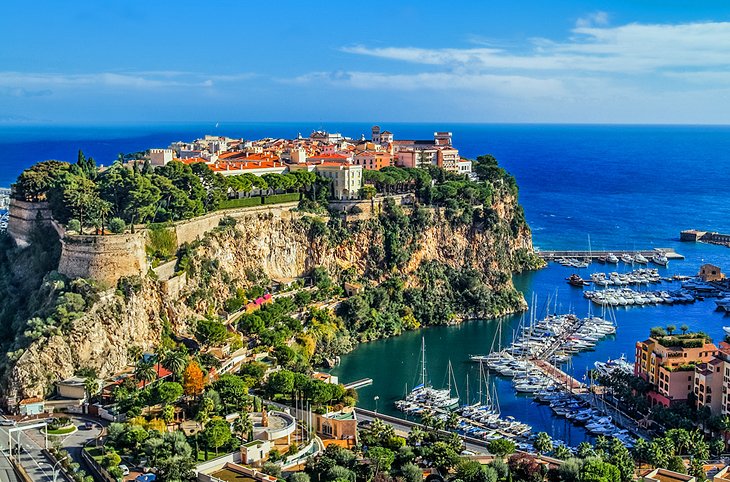
Perhaps the most glamorous spot on the French Riviera, the small city-state of Monaco has a special mystique.
The Principality of Monaco has many unique characteristics: a royal family of the Grimaldi dynasty, its own language called Monegasque (Munegascu), distinctive culinary specialties, and even its own world-class ballet company.
Monaco is a place of spectacular beauty, from its picture-perfect harbor filled with luxurious yachts to the royal palace perched high above the Mediterranean Sea.
The Palais Princier de Monaco (Prince's Palace of Monaco) stands on the "Rock of Monaco," which is the oldest part of the principality. This splendid historic palace is open to the public for visits.
Beyond the "Rock of Monaco," the city-state extends around the coastline. It's worth sightseeing in the more modern Fontvieille district, where the yacht harbor is located. This area has several tourist attractions: Collection de Voitures de S.A.S. le Prince de Monaco (the vintage car collection of Prince Rainier III), a rose garden dedicated to Princess Grace, and the Jardin Exotique that features incredible sea views.
Cannes
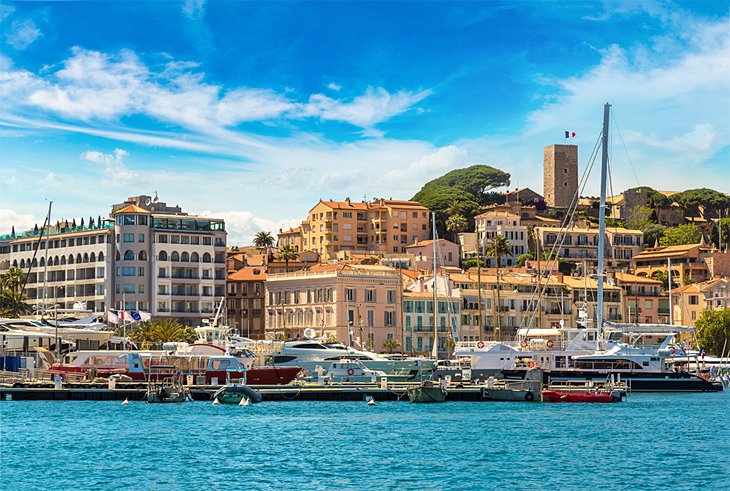
An attractive waterfront, elegant palm-fringed boulevards, and graceful Belle Époque architecture give Cannes its special allure. With its many cultural attractions, this seaside resort encapsulates the glitz and glamour of the French Riviera.
Cannes is where the beau monde comes to indulge in the good life. Well-heeled visitors frequent the exclusive private beaches, take sailing expeditions from the yacht club, shop at designer boutiques, dine at upscale restaurants, and pamper themselves at luxury hotels.
Similar to other resorts on the Cote d'Azur, Cannes has a mild, sunny Mediterranean climate with lush vegetation and subtropical flowers. The town's sheltered location on the Golfe de la Napoule ensures temperate weather even in winter (high season is from May until October).
The most anticipated event of the year in Cannes is the Festival de Cannes in May. This prestigious festival of arthouse cinema that draws movie stars from around the world.
Saint-Paul de Vence
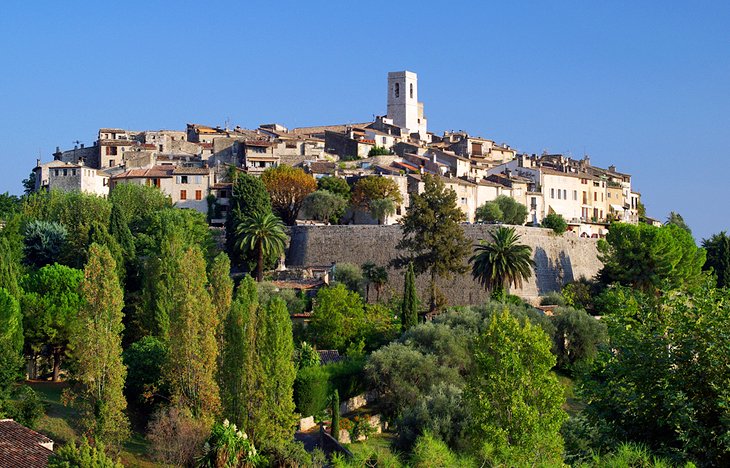
Superbly situated on a rocky precipice that overlooks the Provence countryside, Saint-Paul de Vence is a typical Provençal village perché (perched village). By car, the drive from Nice takes about a half hour, yet Saint-Paul de Vence feels a world away.
Saint-Paul de Vence has retained its medieval ambience within the well-preserved circle of 16th-century ramparts. Narrow cobblestone streets wind through the village, leading to delightful fountains, town squares, and art galleries.
Must-see attractions include the 14th-century Eglise Collégiale and the 15th-century Folon Chapel (White Penitents' Chapel) decorated in contemporary style by Belgian artist Jean-Michel Folon. The chapel's murals, sculptures, and stained-glass windows were designed by Folon and created with the help of local craftsmen.
The village's beauty attracted Post-Impressionist, Abstract, and Surrealist artists, who discovered Saint-Paul de Vence in the 1920s and created exceptional art works.
Tourists can admire examples of this art at the Fondation Maeght, which displays mosaics by Chagall; sculptures by Mirò; and paintings by Bonnard, Chagall, Kandinsky, Léger, and Miró. The collection of the Fondation Maeght is Europe's largest collection of 20th-century art works.
Eze
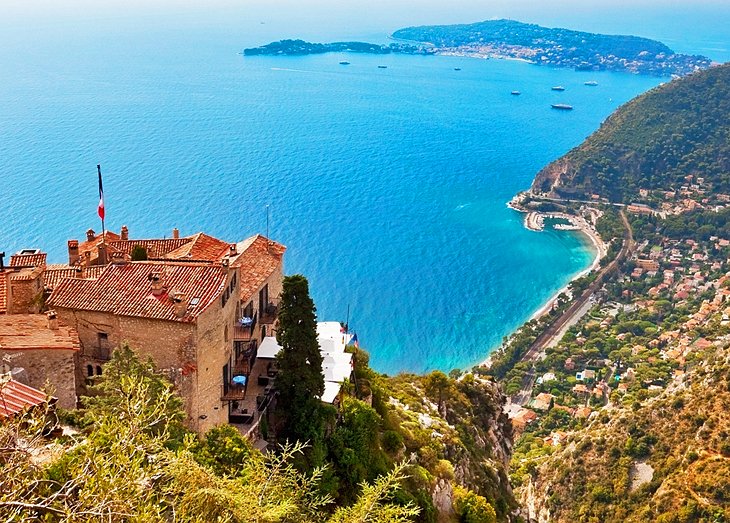
Eze epitomizes a medieval perched village, clinging to the vertiginous edge of a steep, conical rock like an "eagle's nest."
Accessible from Nice (less than 20 kilometers away) by a mountainous coastal road, the village offers a dramatic first impression, with the tower of its church belfry and the ruins of the ancient fortress visible from a great distance.
Once visitors enter the village through the remains of its ancient ramparts, a maze of cobblestone streets provides a wonderful escape from the modern world.
The alleyways are filled with little boutiques, art galleries, and small courtyards, where children play and local artists display pieces for sale. This charming historic town and its laid-back Southern French culture makes Eze a great place for a vacation.
Because the village stands more than 400 meters above the sea, an awe-inspiring backdrop of Mediterranean waters astounds visitors from almost every vantage point in the village. The best outlook is found at the Jardin Exotique (Exotic Gardens) at the highest point in Eze. From this location, there is a sweeping panorama of the coastline from Nice to Monaco, including the Saint-Jean-Cap-Ferrat peninsula.
Other top tourist attractions include the 14th-century Chapelle des Pénitents Blancs on the Rue Principale; the Château de la Chèvre d'Or, a five-star Relais & Châteaux property with a two-star Michelin restaurant; and the Parfumerie Fragonard, which is open to the public for guided tours of the perfume factory.
Villa Ephrussi (in Cap-Ferrat)
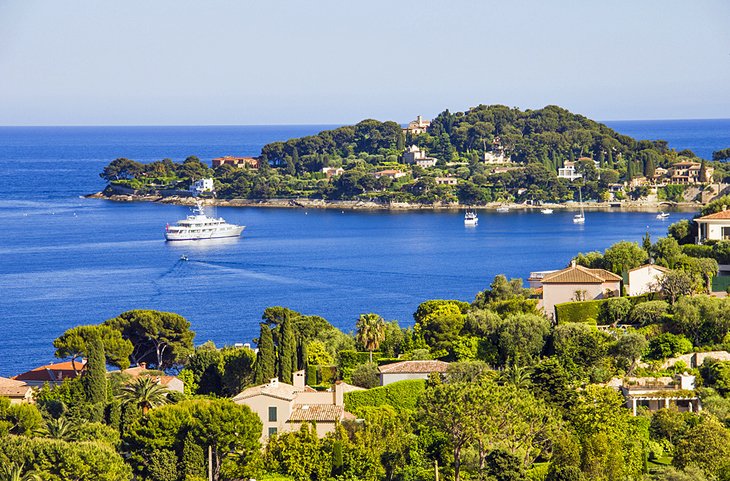
The Côte d'Azur is synonymous with wealth and sophistication, seen in the stately seaside villas all along the coastline. One of the most remarkable is the residence of the Baroness Béatrice Ephrussi de Rothschild, found on the Saint-Jean-Cap-Ferrat peninsula.
The Villa et Jardins Ephrussi de Rothschild offers a peek into the lifestyle of Béatrice, the daughter of the wealthy banker Baron Alphonse de Rothschild. After inheriting her father's vast fortune, Béatrice created a sumptuous villa in the style of an Italian palazzo, decorated with impeccable flair.
Béatrice's dining room has been converted into a tea room and restaurant, where visitors may enjoy lunch, snacks, tea, coffee, and refreshments. With its high ceiling and large windows, the lovely sun-filled room features views of the estate's gardens and the sea.
The dining room also has an outdoor terrace with shaded tables beneath umbrellas and fragrant orange trees. Another option is to order a picnic lunch and enjoy it on the nearby French Garden lawn.
Surrounding the villa are expansive grounds that overlook serene deep-blue Mediterranean waters. The immaculately landscaped property includes French, Spanish, Florentine, Japanese, and Provençal gardens, as well as an Exotic Garden and a fragrant Rose Garden. There is even a garden filled with Roman archaeological relics.
The Villa et Jardins Ephrussi de Rothschild also has a gift shop that sells postcards, jewelry, clothing, and a selection of books about the French Riviera.
Official site: http://www.villa-ephrussi.com/en/home
Villa Kérylos (in Beaulieu-sur-Mer)
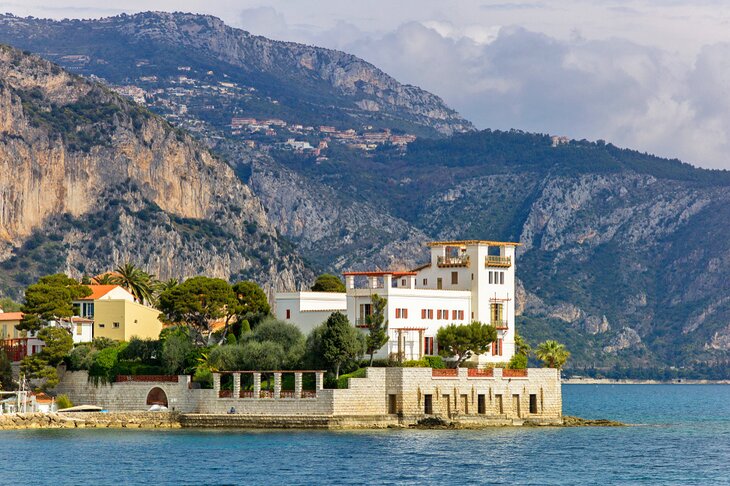
Just a five-minute drive away from the Ephrussi Villa is Beaulieu-sur-Mer, a lovely French Riviera village with a small sheltered marina.
Located on the Baie des Fourmis and protected from the winds by the hills, Beaulieu-sur-Mer is an idyllic vacation resort year-round because of its mild climate.
Standing at the water's edge with sensational views of the Cap-Ferrat peninsula, the Villa Kérylos is a fascinating attraction. This stately villa was the realization of archaeologist Théodore Reinach's dream, created in collaboration with architect Emmanuel Pontremoli and built between 1902 and 1908.
Modeled after a noblemen's house on the Island of Delos in Greece, the villa was constructed entirely following 2nd-century BCE Greek building methods (including the type of stucco and Carrara marble used in ancient times).
The villa's furnishings, mosaics, and decorations accurately replicate those found in archaeological collections. Visiting the Villa Kérylos allows tourists to step back in time a few millennia to a lavish scene of ancient Greece.
Address: Impasse Gustave Eiffel, Beaulieu-sur-Mer
Villefranche-sur-Mer
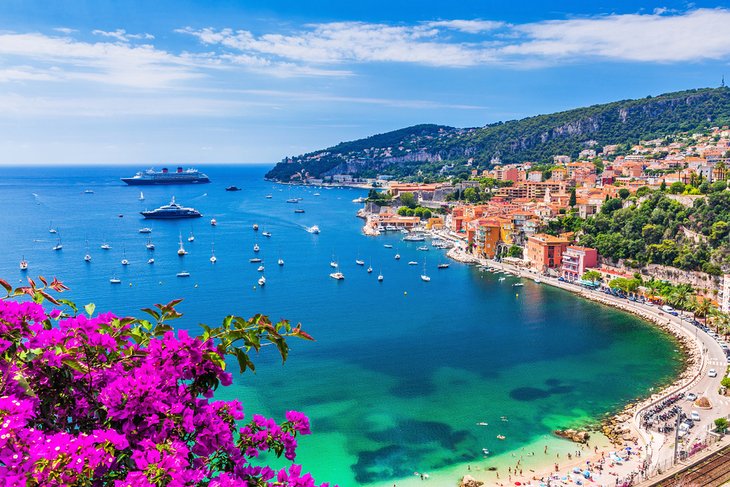
A few kilometers away from Beaulieu-sur-Mer is the charming village of Villefranche-sur-Mer, with its picturesque harbor.
The waterfront is lined with cheerful Italianate buildings, and the dock is filled with neat rows of little sailboats. Rolling hills planted with olive groves surround the village, and the microclimate is so mild here that tropical fruits such as bananas grow abundantly.
The village has a quaint historic center with a citadel built in 1580 and an impressive church. The Eglise Saint-Michel was built in the town's characteristic Italian Baroque style.
By the harbor is the Palais de la Marine and the Chapelle de Saint-Pierre des Pecheurs. This 16th-century chapel has an interior decorated in 1957 with frescoes by Jean Cocteau, who often visited both Villefranche-sur-Mer and Saint-Jean-Cap-Ferrat.
A scene from Cocteau's film, Le Testament d'Orphée, was set on the atmospheric street, the Rue Obscure of Villefranche-sur-Mer.
Cagnes-sur-Mer
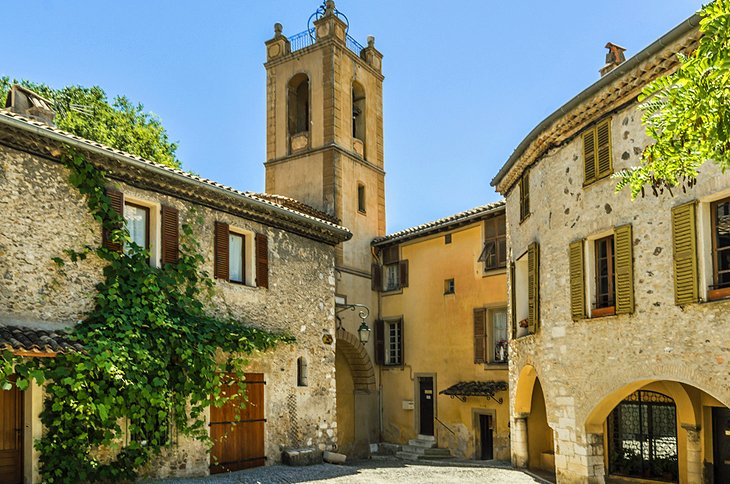
In an enchanting spot on the French Riviera (about 12 kilometers west of Nice), Cagnes-sur-Mer was originally a small fishing village.
The town has several distinct sections, including a beautiful yacht harbor and a historic area up on a hill. The oldest part of the village, called Haut-de-Cagnes because of its hilltop location, has steep pedestrian streets and ancient houses built close together, surrounded by medieval walls.
Presiding over the town center is the imposing 14th-century Château-Musée Grimaldi, which displays a collection of avant-garde and contemporary art. The International Festival of Painting is held here in the summer.
The painter Pierre-Auguste Renoir lived in Cagnes-sur-Mer towards the end of his life. Renoir's home on the Chemin des Collettes is a typical Provençal stone farmhouse, set among olive groves with panoramic views of the Cap d'Antibes peninsula.
The property now houses the Musée Renoir, which displays many of Renoir's artworks. For art lovers, visiting the Musée Renoir is one of the most enjoyable things to do on the French Riviera.
Gorges des Alpes-Maritimes Driving Tour
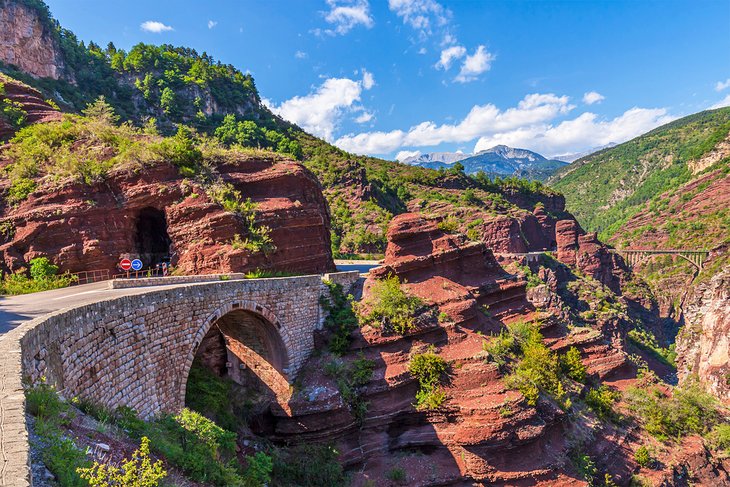
Traveling by car along the Gorges des Alpes-Maritimes route offers a chance to take in the gorgeous scenery of the Mediterranean coast.
One interesting driving itinerary begins where the D2565 branches off near Plan-du-Var into the impressive ravines of the Gorges de la Vésubie. The drive goes through the valley for 10 kilometers before reaching the village of Saint-Jean la Rivière.
From Saint-Jean la Rivière, a narrow, curvy road with hairpin turns continues for about nine kilometers to the hilltop village of Utelle, and then winds another seven kilometers to the Notre-Dame-des Miracles (Madone d'Utelle), a pilgrimage chapel built in 1808 on the site of Marian devotion since the 9th century. From the chapel, visitors can enjoy an exceptional panoramic views that extends over the mountains and valleys to the Mediterranean Sea.
Another suggested scenic drive begins where the Tinée River flows through the Gorges de la Mescla. These gorges are a scenic highlight of this magnificent stretch. The valley is quite wide as far as Bancairon, and then the road dramatically hugs the side of the cliffs. The villages of Clans and Marie, built high up on outcrops, are worth making the detour along the very narrow, winding roads.
Those who want to commune with nature should take a drive to the Grottes des Audides in Saint-Vallier de Thiey. Located 60 meters below ground, this series of caves follows the course of a subterranean stream. Running water has produced chandelier-like stalactites, stalagmites, and even a coral reef.
There is evidence that prehistoric man inhabited the Grottes des Audides. Today, the Grottes des Audides Parc Préhistorique (Prehistoric Park) presents reconstructed scenes from prehistoric life, as well as numerous geological and archaeology exhibits.
Antibes Beaches
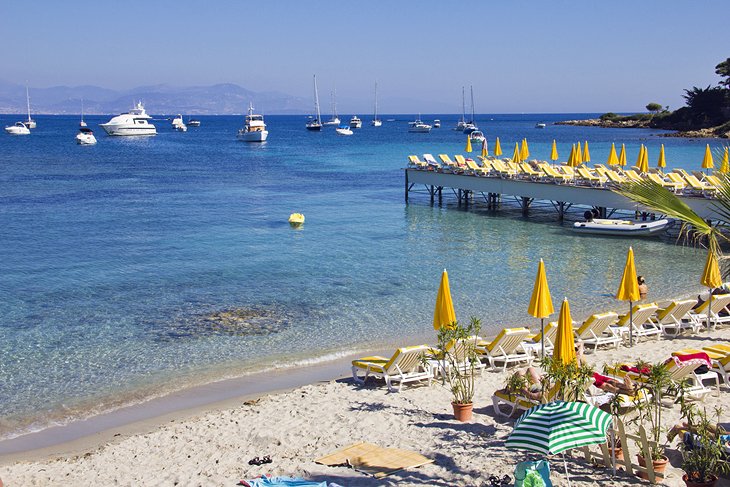
One of the French Riviera's top vacation destinations, Antibes brims with tourist attractions and its seaside is the prime draw during summertime. Antibes' beaches are appreciated by sun-worshipping French vacationers because of the pristine natural setting, pillowy white-sand shores, and crystal-clear waters.
Excellent beaches are found on the Cap d'Antibes peninsula and along the Juan-les-Pins coastline. This extensive two-part seaside area includes public and private beaches ranging in size and facilities. Many beaches have showers, toilet facilities, and parasol rentals; some also have snack bars, cafés, or restaurants with outdoor terraces by the sea.
For travelers who are disappointed by Nice's pebbly beaches and consider sandy beaches a summer holiday requirement, Antibes is one of the best places to visit. Plus, the drive from Nice only takes about 40 minutes, and the train ride is less than 30 minutes.
Perfume Factories and Gorgeous Gardens in Grasse
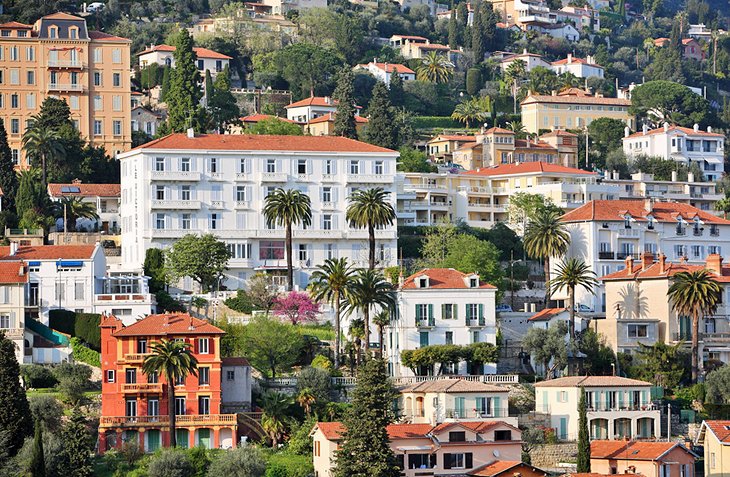
Connoisseurs of beauty and fragrances should include Grasse as an obligatory stop while they are exploring the Provence region.
This alluring town is tucked away in the foothills of the Maritime Alps near the Loup Valley, surrounded by fields of lavender, mimosa, rose, and jasmine flowers that are used to make perfume.
Grasse has several renowned perfume factories, such as Fragonard and Galimard, which are open to the public for tours. For those who enjoy the slow-paced Provençal way of life, the Old Town delights with its romantic cobblestone streets; quiet, shaded courtyards; and outdoor cafés.
On sunny days, the town's spectacular gardens inspire leisurely strolls. Some of the parks feature amazing views of the surrounding countryside. Not to be missed, the three-hectare International Perfume Museum Gardens feature an array of aromatic flowers and plants used in perfumes.
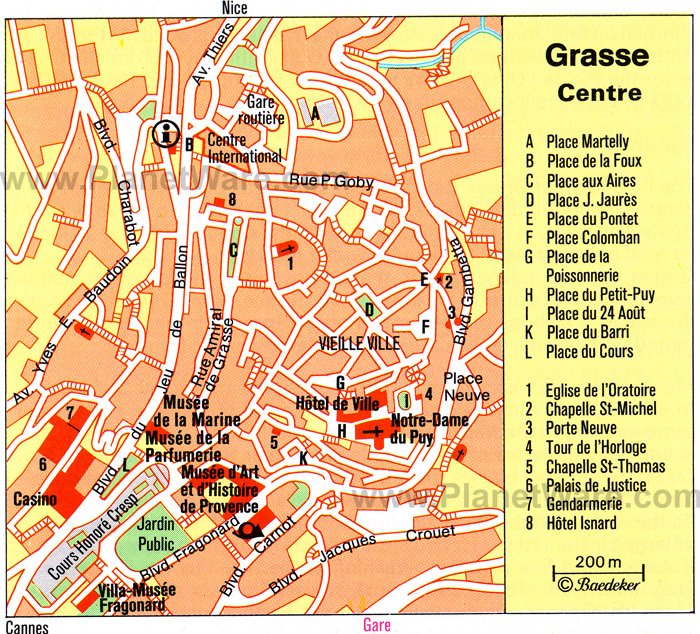
Peillon and Peille: Picturesque Hilltop Villages
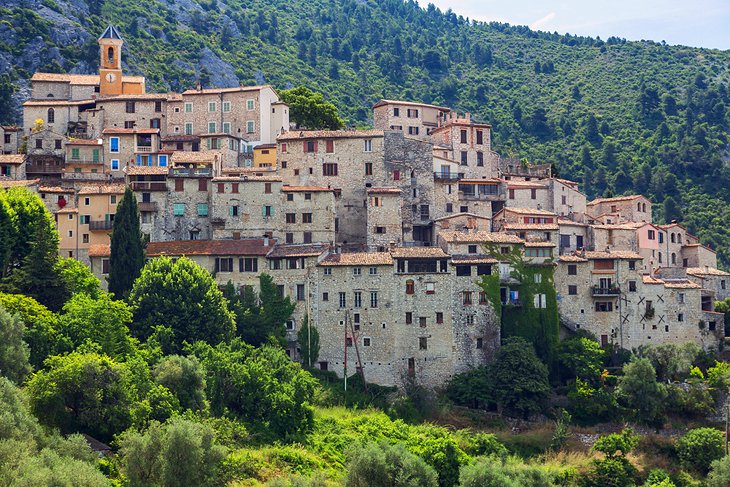
The breathtaking perched village of Peillon is less than 20 kilometers away from Nice.
Arriving here requires a steep drive up a mountainous road and then exploring the village by foot. With its medieval cobblestone lanes, pedestrian staircases, and closely built cluster of historic buildings, Peillon is full of old-world ambience.
Visitors should be sure to see the parish church, the Eglise Saint-Sauveur, which sits at the highest point in the village. Other top attractions include the Chapelle des Pénitents-Blancs that's adorned with delicate 15th-century fresco paintings by Jean Canavesio and the Chapelle Saint-Roch in a location that affords magnificent views.
For those spending the night in Peillon, the three-star Auberge de la Madone offers delightful accommodations with private balconies. The hotel's restaurant serves authentic Provençal cuisine in an elegant dining room or on a shaded outdoor terrace with splendid views of the mountainous landscape.
Steps away from the Auberge de la Madone hotel is a family-run restaurant, Les Plaisirs, which has received the Michelin Guide's "Bib Gourmand" award for its excellent-quality meals offered at a good value.
Another delightful hilltop village, Peille is actually walking distance (seven kilometers away) from Peillon via a scenic two-hour hike along the Route Napoléon. The drive from Peillon to Peille takes about 30 minutes.
Although Peille is more remote than Peillon, the tiny village has a couple of noteworthy tourist attractions: the Eglise Sainte-Marie-de-l'Assomption, a 12th-century Romanesque church, and the Musée du Terroir, a museum devoted to sharing information about the village's history and customs.


